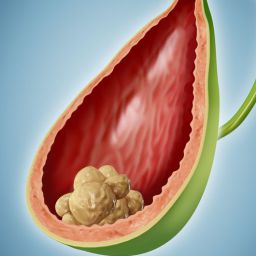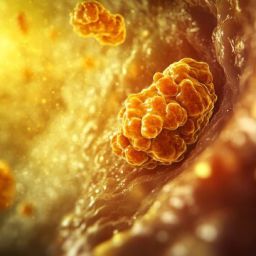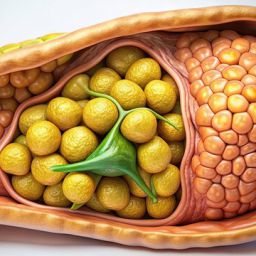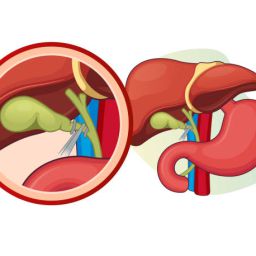
Bile Duct System and Its Role in Digestion
Before diving into the specific infections that can trigger bile duct stricture, it’s important to first understand the anatomy and function of the bile ducts.
- The Bile Duct System: The bile duct system consists of intrahepatic ducts (inside the liver), extrahepatic ducts (outside the liver), and the common bile duct (which connects the liver and gallbladder to the small intestine). The bile ducts carry bile, a fluid produced by the liver, to the small intestine, where it helps break down fats and absorb fat-soluble vitamins.
- The Function of Bile: Bile is composed of water, bile salts, cholesterol, and other waste products, including bilirubin, which is a byproduct of red blood cell breakdown. When food enters the small intestine, particularly fatty food, bile is released to aid in digestion. Without the proper flow of bile, digestion becomes inefficient, leading to problems such as malabsorption of fats and fat-soluble vitamins.
What is Bile Duct Stricture?

Bile duct stricture refers to the narrowing or constriction of the bile ducts, which impairs the flow of bile. Bile duct strictures can develop as a result of a variety of causes, including scarring from injury, tumors, or conditions like primary sclerosing cholangitis (PSC). However, infections are also a significant cause of bile duct strictures.
When an infection affects the bile ducts, it can cause inflammation, scarring, or fibrosis, leading to a narrowing of the duct. This prevents bile from flowing freely from the liver to the intestines, resulting in a buildup of bile in the liver and a range of digestive and systemic symptoms.
Infections That Trigger Bile Duct Stricture
Several types of infections can lead to bile duct stricture. These infections often cause inflammation of the bile ducts (cholangitis), and in chronic cases, they may result in scarring and the formation of strictures. The most common infections that trigger bile duct stricture are:
1. Bacterial Cholangitis (Ascending Cholangitis)
Bacterial cholangitis is an infection of the bile ducts, typically caused by bacteria that ascend from the intestines to the bile ducts. This condition is often associated with bile duct obstruction, such as from gallstones or tumors, which create a breeding ground for bacteria. The bacteria most commonly responsible for cholangitis include:
- Escherichia coli (E. coli): The most common bacterial cause of cholangitis, which is typically found in the intestines.
- Klebsiella pneumoniae: Another common pathogen, often associated with hospital-acquired infections.
- Enterococcus and Clostridium species: Other less common but possible contributors to the infection.
Cholangitis can be life-threatening if not treated promptly, as the infection can spread to the bloodstream, causing sepsis. In the long term, chronic bacterial infections can lead to scarring and fibrosis of the bile ducts, resulting in bile duct stricture.
How Does Bacterial Cholangitis Affect the Body?
When bacterial cholangitis develops, it causes inflammation in the bile ducts. As the infection persists, it may lead to the formation of scar tissue, which can narrow the bile ducts and obstruct the flow of bile. This can lead to:
- Jaundice: A yellowing of the skin and eyes due to the buildup of bilirubin in the blood.
- Fever and Chills: Symptoms of an ongoing infection.
- Pain: Particularly in the upper right abdomen, as the inflamed bile ducts cause discomfort.
- Sepsis: If the infection spreads, it can lead to sepsis, a potentially life-threatening condition that causes widespread inflammation throughout the body.
In severe cases, if the infection is not treated, the resulting scarring may lead to permanent bile duct narrowing or stricture.
2. Parasitic Infections
Certain parasitic infections can also lead to bile duct stricture. The most common parasitic infections associated with bile duct strictures include:
- Liver Flukes (Fasciola hepatica): These parasites live in the bile ducts and can cause inflammation and damage to the bile ducts. Fasciola hepatica is most commonly found in regions where people consume raw or undercooked fish, especially in parts of Asia and South America. The presence of liver flukes in the bile ducts can cause cholangitis and, over time, lead to bile duct strictures.
- Opisthorchis and Clonorchis species: These liver flukes are also associated with cholangitis and bile duct stricture, particularly in Southeast Asia. Chronic infection with these parasites can cause fibrosis in the bile ducts, resulting in narrowing and obstruction.
How Do Parasitic Infections Affect the Body?
When liver flukes or other parasites infect the bile ducts, they cause chronic inflammation and irritation. This prolonged irritation can lead to fibrosis, where healthy tissue is replaced by scar tissue. The effects on the body include:
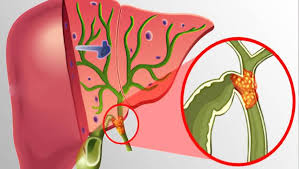
- Abdominal Pain: Typically in the upper right quadrant of the abdomen.
- Cholestasis: Reduced bile flow due to duct narrowing, leading to symptoms such as jaundice, dark urine, and pale stools.
- Chronic Inflammation: Persistent infection and inflammation can lead to bile duct scarring, eventually resulting in bile duct stricture.
- Liver Damage: In severe cases, chronic parasitic infections can result in cirrhosis or liver cancer due to ongoing damage to liver cells and bile ducts.
3. Viral Infections
Viral infections can also cause inflammation of the bile ducts, potentially leading to bile duct strictures. Some of the most common viral infections associated with the biliary system include:
- Hepatitis B and C: Chronic hepatitis infections can lead to liver damage and fibrosis, and may also affect the bile ducts. In some cases, patients with chronic viral hepatitis may develop primary sclerosing cholangitis (PSC), a condition characterized by progressive bile duct narrowing and inflammation.
- Cytomegalovirus (CMV): This virus can cause a variety of symptoms, including inflammation of the bile ducts. CMV infection is more likely to cause complications in immunocompromised individuals, such as organ transplant recipients or people with HIV/AIDS.
How Do Viral Infections Affect the Body?
Viral infections that affect the liver and bile ducts can lead to:
- Cholestasis: Impaired bile flow due to inflammation or scarring of the bile ducts.
- Fatigue: Common in patients with viral infections, particularly hepatitis B or C.
- Jaundice: Accumulation of bilirubin due to impaired bile excretion.
- Progressive Liver Damage: Chronic viral infections, particularly hepatitis, can lead to cirrhosis and liver failure over time, especially if the bile ducts are affected.
4. Fungal Infections
Although less common, fungal infections can also affect the bile ducts, particularly in immunocompromised individuals. Candida species, a type of fungus, can infect the biliary system, particularly in patients who have undergone procedures such as endoscopic retrograde cholangiopancreatography (ERCP) or those with central venous catheters.
How Do Fungal Infections Affect the Body?
Fungal infections in the bile ducts can lead to:
- Biliary Obstruction: Fungal growth can cause blockages in the bile ducts, leading to cholestasis.
- Systemic Infection: If the infection spreads, it can cause sepsis and other systemic issues.
- Jaundice: As with other infections, fungal infections in the bile ducts can lead to the accumulation of bilirubin in the blood.
Diagnosis and Treatment of Infections Leading to Bile Duct Stricture
Diagnosing infections that cause bile duct strictures involves a combination of medical history, physical examination, imaging tests, and laboratory work. Key diagnostic tools include:
- Blood Tests: To identify signs of infection (e.g., elevated white blood cell count) and liver dysfunction (e.g., elevated liver enzymes, bilirubin levels).
- Ultrasound and CT Scans: To visualize the biliary system and detect blockages or dilated bile ducts.
- Endoscopic Retrograde Cholangiopancreatography (ERCP): To visualize and treat bile duct obstructions and perform bile duct biopsies.
- Stool and Blood Cultures: To identify bacterial, parasitic, or fungal pathogens.
Treatment generally includes:
- Antibiotics: To treat bacterial infections, including cholangitis.
- Antiparasitic Medications: To address parasitic infections such as liver flukes.
- Antiviral Therapy: For chronic viral infections like hepatitis B or C.
- Fungal Treatment: Antifungal medications to address fungal infections.
In some cases, procedures such as ERCP, stent placement, or surgery may be required to relieve bile duct obstruction caused by infection or scarring.
Infections are a significant cause of bile duct stricture and can lead to serious complications, including liver damage and bile duct obstruction. Bacterial, parasitic, viral, and fungal infections all contribute to the development of bile duct narrowing through inflammation and scarring. Early detection and appropriate treatment of infections are crucial for preventing long-term damage and improving the quality of life for affected individuals. By understanding how infections trigger bile duct strictures, healthcare providers can better manage these conditions and mitigate their effects on the body.

